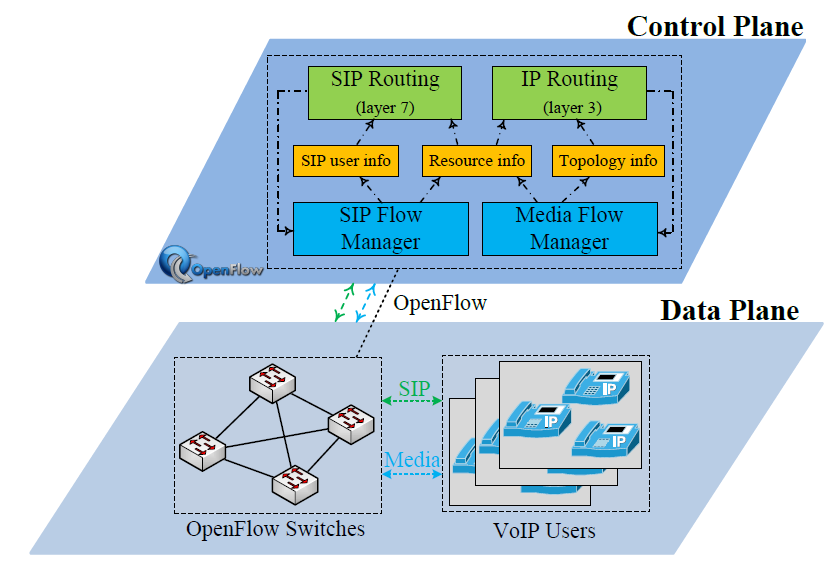
Nowadays, voice over IP (VoIP) is a cost-effective and efficient technology in the communications industry. Free applications for transferring multimedia on the Internet are becoming more attractive and pervasive day by day. Nevertheless, the traditional, close, and hardware-defined nature of the VoIP networks’ structure makes the management of these networks more complicated and costly. Besides, its elementary and straightforward mechanisms for routing call requests have lost their efficiency, causing some problems, such as SIP servers’ overload. In order to tackle these problems, we introduce VoIP network softwarization and virtualization and propose two novel frameworks in this article. In this regard, we take advantage of the SDN and NFV concepts such that we separate data and control planes and provide the possibility for centralized and softwarized control of this network. This matter leads to effective routing. The NFV also makes this network’s dynamic resource management possible by functions virtualization of the VoIP network. The proposed frameworks are implemented in a real testbed, including Open vSwitch and Floodlight, examined by various scenarios. The results demonstrate an improvement in signaling and media quality in the VoIP network. As an example, the average throughput and resource efficiency increased by at least 28% and the average response time decreased by 34%. The overall latency has also been reduced by almost 39%.